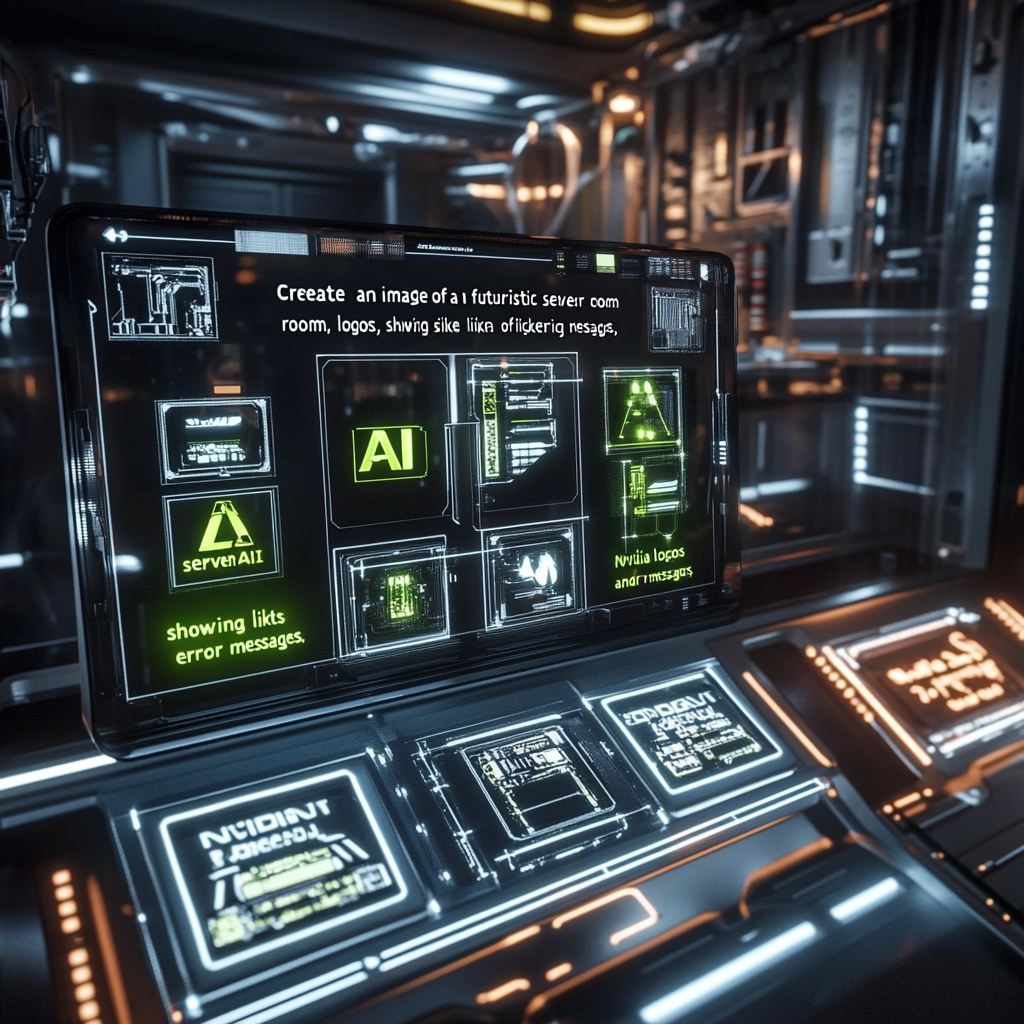
Nvidia’s Blackwell AI Chip: Promise and Challenges
Nvidia's Blackwell AI Chip: A Rollercoaster of Innovation and Overheating Woes
In the exhilarating ride that is the tech industry, where creativity and capital dance a dizzying tango, few companies rev up the excitement quite like Nvidia. As the clock ticks down toward their third-quarter earnings report, the company finds itself navigating a steep hillock of challenges surrounding their much-anticipated Blackwell AI chips. Buckle up; let's dive into this tale of revolutionary promise mingled with the harsh reality of hot metal!
Now, let’s talk about the showstopper—the Blackwell AI chip. Launched with all the fanfare of a red-carpet premiere in March 2024, this new GPU architecture is positioned as Nvidia’s crown jewel, a lightning bolt aimed at revolutionizing artificial intelligence. Packed with features that exponentially leap over its predecessors, the Blackwell chips promise a jaw-dropping 30-fold increase in performance for tasks like chatbot responses. We're not talking about a minor upgrade; these chips come in various models, such as B100, B200, and GB200, boasting speeds that are, quite frankly, like racing a Ferrari against a horse-drawn buggy. The previous Hopper architecture? It's now living in Blackwell's rearview mirror, and that's a mile marker worth celebrating, for data centers hungry to devour AI capabilities.
But, wait a second—what's that plume of smoke? Enter the notorious overheating issue! While anticipation bubbles over like a pot of boiling water, Nvidia is facing a hot mess of trouble—overheating Blackwell GPUs. Apparently, the excitement fades when multiple chips are stacked in server racks ideally suited to house 72 of them. If this were a romantic comedy, we’d be rolling our eyes at the classic "just when I thought things were going smoothly" plot twist. Reports have emerged that Nvidia has had to go back to its suppliers, asking for redesigns multiple times. It’s turning into a saga of technical grievances, and no, this isn’t a case of someone forgetting to pay the heating bill.
What does this mean for the good folks who want to deploy these chips in their grand AI projects? We're looking at some serious delays thanks to the high temperature. Industry heavyweights like Meta Platforms, Google, and Microsoft are itching to roll out their innovations, but those who aren’t sweating under those bright lights of anticipation might just be the ones sharing the cooling bag. Add in eager tech juggernauts like Amazon Web Services and SoftBank, and you've got a ticking clock that might just bring an entire set of projects screeching to a halt. Not ideal, right?
With stock prices behaving like teenagers at a dance—up one moment, down the next—Nvidia’s shares slipped by 3.3% in pre-market trading as the news of these overheating woes spread like wildfire. Despite earlier successes, such as breaking revenue records and adjusted earnings surpassing estimates, investors have good reason to be twitchy. Given that Nvidia’s stock has blasted off by a staggering 195% this year, making it the prized trophy of tech giants, any hiccup, especially one as glaring as overheating, could send the bravest investors running for cover.
Now, lest you think Nvidia is twiddling its thumbs, rest assured that they’re not lounging by the pool with a piña colada. Jensen Huang, the ever-visionary CEO of Nvidia, is on the case like a detective in a mystery novel. The engineering teams are hot on the trail, actively collaborating with cloud service providers to smooth out these thermal wrinkles. In Huang's words, these engineering iterations are as natural as a hiccup after a hearty meal. Confidence remains high, as he reassures us that the demand for Blackwell chips is so robust that they’re sold out for the next 12 months. Sounds like there's plenty of hot air—and perhaps more than just heat—behind that statement!
As Nvidia strides forward, it is clear that the Blackwell AI chip exists in a world of fascinating contradictions. This technological marvel is poised to usher in a new age of AI capabilities, yet it grapples with the very real challenge of heat management. One must wonder whether we’re watching an epic saga of innovation, with all its ups and downs. After all, in this fast-paced realm, the line between soaring success and downright disaster is as thin as a razor’s edge.
So, dear readers, while Nvidia confronts these challenges and strives to ensure that Blackwell chips fly off the shelves without leaving a trail of smoke, we find ourselves at a crossroads in the AI landscape. Are you curious about the unfolding drama? Want to keep a finger on the pulse of this riveting tech saga? Then don’t miss out—stay in the loop with all the latest developments, market news, and engineering triumphs (or tribulations) of Nvidia's technology by subscribing to our Telegram channel: @channel_neirotoken.
Remember, outside the glowing screens where these technologies come alive, innovation doesn’t just take flight; it often battles unforeseen hurdles. And in the riveting tale of Nvidia’s Blackwell AI chip, who knows what surprises and technical triumphs lie just around the corner? Stay tuned, dear reader, as the story continues to unfold!

